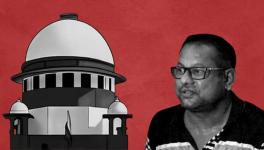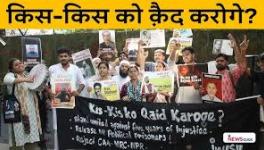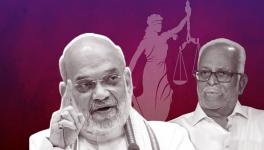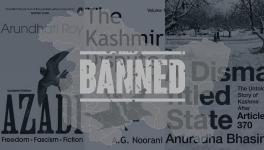The Right of Private Defense – a Legal View
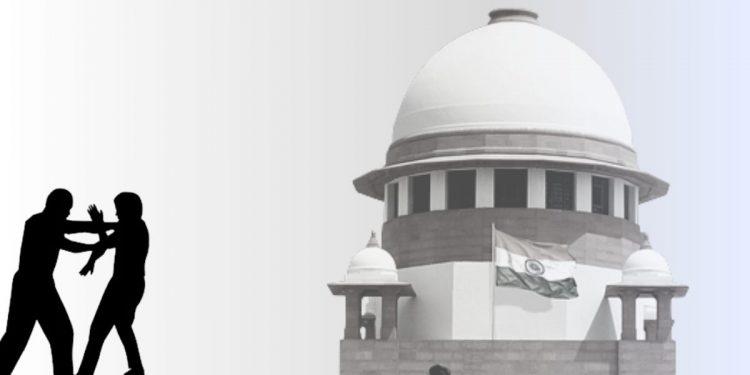
RAVI NAIR of the SOUTH ASIA HUMAN RIGHTS DOCUMENTATION CENTRE provides an analysis of the right to self defense relating to person and property under the prevalent criminal jurisprudence, and how the Supreme Court has looked at it over the course of time.
————-
It is the duty of the State to protect its citizens and their property from danger. However, there are circumstances wherein the State machinery is not available or is passive.
This has been happening, once too often, since 2014 in India. Lynching cases under the pretext of thwarting the trade in cattle or beef or even for belonging to a minority or a lower caste, are just a small example of how easy it has become for thugs, vigilantes and mobs to take the law into their own hands.
Also Read: The debilitating saga of mob lynching
The Human instinct is to protect one’s self, and the law does not expect a person to submit passively but to defend his/her life or the property in peril. The right to self-defense is a natural right of resistance and self-preservation, and has been enacted in the criminal jurisprudence of democratic countries. No legal forum expects citizens to get assaulted without having a chance to defend themselves, especially when they have already suffered grievous injuries.
Under the criminal law in India, Sections 96 to 106 of the Indian Penal Code of 1860 (IPC) deal with the right of private defense relating to persons and property. Sections 96 to 103 along with Exception 2 to Section 300 of the IPC leave no uncertainty that culpable homicide is not murder if the offender, in good faith of the right of private defense of person or property, exceeds the power bequeathed by the law and causes the death of the person against whom he is exercising such right of defense, provided that such right is exercised without contemplating and without any intention of doing more harm than is necessary for the purpose of such defense.
These provisions protect a person in cases where he uses reasonable force to protect one’s body and property as well as another’s body and property when state machinery is not readily available.
To deal with the hesitation among people to take recourse to self-defense, this right extends, in certain circumstances, to include situations which lead to the death of the person who poses such a threat, subject to some restrictions. It is only permitted when there is immediate danger to life or property and in situations where the accused is not the aggressor.
The root of this concept is also found in Anglo-American jurisprudence, and is common to all civilized jurisprudence. The law does not expect a person to modulate his defense step by step or tier by tier in situations where his life or property is in peril.
Section 103 of the IPC, similarly, deals with the right of private defense of property in situations enumerated such as robbery, house-breaking by night, mischief by fire committed of any building, tent or vessel used as a human dwelling, and so on. The State actor must submit to the process of law as applicable to any citizen in a claim to have taken life for self-preservation/defense, or under other circumstances permissible in law.
The factors that are relevant to decide if the plea of right of private defense is available or not depends upon the injuries received and caused by the accused, the imminence of danger to his safety, the time available for another recourse to public authorities, harm that have been caused and reasonable apprehension of death or grievous hurt to the person or danger to the property concerned.
The right of private defense is a plea of defense and not a right of aggression. It is available in the face of imminent peril to those who act in good faith and with reasonable force. It excludes from its purview situations wherein the right is exercised as a shield to justify an act of retribution.
Necessary force
The law undoubtedly indicates that the right of private defense is available only when there is reasonable apprehension of receiving the injury. The right of a man to stand his ground and defend himself when attacked with a deadly weapon, even to the extent of taking his assailant’s life, depends upon whether he reasonably believes that he is in immediate danger of death or grievous bodily harm from his assailant, and not upon the detached test of whether a man of reasonable prudence, so situated, might not think it possible to fly with safety or to disable his assailant rather than kill him.
In the case of Vidhya Singh versus the State of Madhya Pradesh (1971), the Court observed that the right of self-defense is a very valuable right, serving a social purpose and should not be construed narrowly. Situations have to be adjudicated from the subjective point of view of the accused concerned in the surrounding excitement and confusion of the moment, confronted with those exact circumstances of peril and not by any minute and pedantic analysis of the situation by objectivity which would be natural in a courtroom, or would seem absolutely necessary to a perfectly relaxed bystander. The person facing a reasonable apprehension of threat to himself cannot be probable to modulate his defenses tier by tier, similar to a man in ordinary times or under normal circumstances.
Every person has a right to defend his own body and the body of another person against any offence, affecting the human body and cause such injury as may be necessary to ward off the apprehended danger or threat.
The right of self-defense initiates as soon as reasonable apprehension occurs and it is co-terminus with the extent of such apprehension. Again, it is a defensive and not a retaliatory right, and can be exercised only in cases where there is no chance to have a recourse from the public authorities.
The right of self-defense where causing death is justifiable
Section 100 of the Indian Penal Code deals with situations in which the right of private defense of the body extends to voluntarily causing death or any other harm to the assailant, if the offence which occasions the exercise of the right is one of the seven kinds enumerated under the Section. The offences specified under the said provision include offences like causing death, grievous hurt, assault with the intention of committing rape, of gratifying unnatural lust, of kidnapping or abducting, or of wrongful confinement when no recourse is available, or an act or apprehension of acid attack.
The Supreme Court, in Amjad Khan versus the State (1952), held that the accused had reasonable grounds for apprehending that either death or grievous hurt would be caused to himself or his family. The circumstances in which he was placed were quite sufficient to give him a right of private defense of the body even to the extent of causing death. The facts of the case are that a communal riot broke out between some Sindhi refugee residents and the local Muslims in Katni. The shops and the residence of the accused and his brother were adjacent to each other. The mob approached and looted the shop of the accused’s brother. The accused fired on hearing this alarming news at the crowd through the hole in the wall of his dwelling house near the shop which resulted in the death of one Sindhi and injury to three other Sindhis.
Whether a person claiming the right of private defense of the body had any reasonable apprehension of danger, depends on the state of his mind and also the situation in which he had been placed at the relevant time and no one can say what was passing in his mind at that time. It is probable that an accused might mistakenly believe that there is an imminent danger to his own life or the life of another person which makes him act in a certain manner. In such cases, an accused would be entitled to be adjudicated on the pretext of the facts he truly believed, and hence would be permitted to use a degree of force that was reasonable in the context of such apprehension.
The judicial standing suggests that there is a reasonable apprehension of danger if the force used in communal riots causing death of the assailant and harm gives rise to a reasonable apprehension of grievous injury or death even where the injuries inflicted by the aggressor are not fatal.
Right of private defense when it causes unavoidable harm to innocent persons
The law protects a man exercising the right of private defense, if some innocent person is killed or injured in the exercise of such right by exempting him from criminal liability under Section 106 of the IPC. The said section provides that when there is a deadly assault on a person which causes a reasonable apprehension of death and his right of private defense cannot be effectively exercised without causing harm to an innocent person, then any harm caused to innocent persons is also protected by law. The illustration to this section is self-explanatory.
In the case of Wassan Singh versus the State of Punjab (1995), there was a fight between two groups of people. The accused received nine injuries and in exercising private defense, he shot at the assailants with his gun, which hit an innocent woman bystander, causing her death. The Supreme Court held that the accused had the right of private defense and hence, he was acquitted. Section 106 read with Section 100 of the IPC, therefore, applies to a case of extreme necessity in which a person is entitled to run the risk of harming an innocent person in order to save himself/ herself from mortal injury.
Acts against which there is no plea of right to private defense
Section 99 of the IPC deals with acts against which there is no right of private defense and, inter alia, provides that this right of private defense does not extend to cases where more harm than reasonable is inflicted.
There is no right against an act which does not reasonably cause the apprehension of death or of grievous hurt, if done, or attempted to be done, by a public servant acting in good faith, though that act may not be stringently justifiable by law.
There can also be no occasion to exercise this right after the imminent threat has either been destroyed or defeated.
The aggressor
The question of justification of the right of private defense has largely been raised in all cases focusing on the protection of the right to aggressor. The Supreme Court, in the State of U.P. versus Ram Swarup (1974), laid down a stringent test with regard to permitting the initial aggressor to claim this right of private defense under exceptional situations. It necessitates that the aggressor should have made every effort to negate the aggression, thereby escaping from the situation already created by him in every possible manner.
Whereas, the Supreme Court in the State of Uttar Pradesh versus Ram Kishor (1983), held that a person who is an aggressor cannot rely upon the right of self-defense, if in the course of the aggression, he deliberately causes death of the person he initially attacked.
Burden of proof
It is a well-settled principle that the accused need not prove their case beyond all reasonable doubt in a plea of self-defense under Section 105 of the Indian Evidence Act, 1872. On account of preponderance of probabilities, if the plea of self-defense becomes plausible, then the same should be accepted or at least, a benefit of doubt arises.
The Supreme Court, in Salim Zia versus the State of U.P. (1978), made a landmark point that the accused might not take this plea explicitly or adduce any evidence in support of it but he can still succeed in getting the plea of private defense if he is able to bring out materials on record, on the basis of evidence of the prosecution witnesses or on other pieces of evidence, to show that the criminal act which he committed was justified in exercise of his right of private defense of person or property, or both. If the plea of right of private defense put forward by the accused appears to be quite probable, it cannot be rejected.
In GVS Subrayanam versus the State of A.P. (1970), the Supreme Court held that the court is not precluded from giving to the accused the benefit of the right of private defense even where the plea of self-defense was not raised by him, if on proper appraisal of the evidence and other relevant material on the record, the court concludes that the circumstances in which he found himself at the relevant time gave him the right to use his gun in exercise of this right.
It is a settled principle of criminal law that every individual is innocent unless proven otherwise. This supports the idea that the benefit of doubt should be given to the accused, and on the basis of this theory, the later decisions have taken the line that if the evidence produced before the court indicates that the accused might have acted in exercise of the right of self-defense, he may be given such benefit.
The Supreme Court, in Buta Singh versus the State of Punjab (1991), noted that a person who is apprehending death or bodily injury cannot weigh on golden scales, in the spur of the moment and in the heat of circumstances, the number of injuries required to disarm the assailants who were armed with weapons. In moments of excitement and disturbed mental equilibrium, it is often difficult to expect the parties to preserve composure and use exactly only so much force in retaliation commensurate with the danger apprehended to him.
Where assault is imminent by use of force, it would be lawful to repel the force in self-defense and the right of private defense commences as soon as the threat becomes so imminent. Such situations have to be pragmatically viewed, and not with high-powered spectacles or microscopes to detect slight or even marginal overstepping. Due weightage has to be given to, and hyper technical approach has to be avoided in, considering what happens in the spur of the moment, on the spot, and keeping in view, normal human reaction and conduct, where self-preservation is of paramount consideration.
But, if the fact situation shows that in the guise of self-preservation, what really has been done is to assault the original aggressor, even after the cause of reasonable apprehension has disappeared, the plea of right of private defense can legitimately be negated. The court dealing with the plea has to weigh the material to conclude whether the plea is acceptable. It is essentially, a finding of fact.
The Supreme Court further reiterated that the burden which rests on the prosecution to establish its case beyond a reasonable doubt is neither neutralised nor shifted because the accused pleads the right of private defense. The prosecution must discharge its initial traditional burden to establish the complicity of the accused and not until it does so can the question arise whether the accused had acted in self-defense.
The Supreme Court has supported a trend of treating the right of private defense on a special footing from other general exceptions on the question of proof. The court on its own can explore the possibility of giving an advantage of the right to the accused even in cases where the right of private defense was not specifically pleaded.
(Ravi Nair is with the South Asia Human Rights Documentation Centre. The views expressed are personal.)
Get the latest reports & analysis with people's perspective on Protests, movements & deep analytical videos, discussions of the current affairs in your Telegram app. Subscribe to NewsClick's Telegram channel & get Real-Time updates on stories, as they get published on our website.











